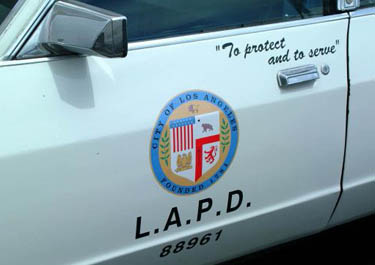 With the largest housing projects west of the Mississippi and 120 recognized gangs within 10 square miles, the Southeast Division of the Los Angeles Police Department (LAPD) is working harder than ever to keep children away from the gang culture.
With the largest housing projects west of the Mississippi and 120 recognized gangs within 10 square miles, the Southeast Division of the Los Angeles Police Department (LAPD) is working harder than ever to keep children away from the gang culture.
Officers started a local chapter of the Police Activities League (PAL) in Southeast Los Angeles to provide sports teams, field trips and mentoring opportunities for children exposed to violence and fear on a daily basis.
“The kids [in our division] have a lot of challenges, so it’s hard for them to go outside and play,” said police officer Scott Burkett, one of the officers in charge of the program. “There’s so many negative influences, that a lot of their parents don’t want them to go outside. They are afraid to go outside, to be drafted into a gang or become an accidental victim.”
Because of budget cuts to after-school programs, the activities league offers students a chance to participate in activities outside of school under the watchful eye of an adult. The kids have come to appreciate the support of police officers as their coaches and mentors, but it wasn’t instantaneous.
“Trust is a huge issue. They don’t trust cops so they didn’t trust us at first, but by working with the kids over time you see a change in how they come to open up and trust us, which is great to see. “ Burkett said. The officers of PAL agree that it also helps when they show up in jeans and a police jacket instead of uniforms with cuffs and a gun.
At College Ready Academy High School 11, a weekly hockey program gives the students something to look forward to after school. It also keeps them motivated in class.
“They bring their skates to school and they are so excited,” said Avery Seretan, a ninth grade teacher at College Ready Academy. “One of my students knows he won’t be able to go to hockey practice unless he does his work. Lately, he’s been really on top of his schoolwork so he doesn’t miss out.”
College Ready Academy also worked with PAL to provide incentives for academic improvement. The school recently conducted benchmark tests. Students were told that if their scores went up by 20 percent or more they would earn a field trip to Big Bear. The officers planned for 15 students. Thirty qualified.
Test scores are measurable proof that the league is helping students, but earning their trust and seeing how much the kids look forward to PAL activities are constant motivation, say the officers who facilitate the program. At weekly hockey practices, Officer Derek Kosloski said students channel all of their energy into learning the sport.
“Hockey can be a bit rough and emotions sometimes take over, but when the kids are with us they are perfectly well-behaved. It’s hard to believe it when I hear about some of the kids on our team being suspended for bringing knives to school or fighting,” Kosloski said.
Hockey is popular with the high school students and Kosloski hopes to have enough teams to start a Southeast league. None of the students had ever played hockey before, so lessons started from scratch and the kids soaked it up.
“A lot of them didn’t know how to hold the hockey stick, play left or right-handed and had never seen a live game before we took them to a Kings game,” Kosloski said. “The kids are so excited that when we stop practice they always want to play one more game. They are completely fired up.”
Activities like this are a preventative way for police officers to fight gang recruitment and violence. They see the program as a way of putting money into children before they become gang members instead of spending money and time arresting them later.
Students started participating in activities in the PAL program last December, but the Southeast chapter was officially formed in March 2010. Paperwork and technical issues such as being recognized as a non-profit organization and being recognized by the national PAL organization took almost nine months.
Money for trips like the one to Big Bear comes from fundraisers by the police station and support from businesses such as the Los Angeles Angels, Body Glove and the Salvation Army.
“It’s been a lot of networking and getting out there in the community. We’ve been really lucky, though” said Burkett. The effort is worth introducing the students to places outside the projects, he added.
The Southeast PAL program is still new but is slowly working its way into the community.
“They definitely play a big role here and our kids have really come to look up to them,” Seretan said.
Kosloski maintains that it’s all about teaching the kids with positive reinforcement so “when it comes time to make that tough decision, they’ll make the right one.”
Photos courtesy of Creative Commons
More stories about the LAPD in South Los Angeles:
Los Angeles boasts lowest homicide rate in 40 years
Los Angeles Police Department argues nonprofits are better than handouts on Skid Row














